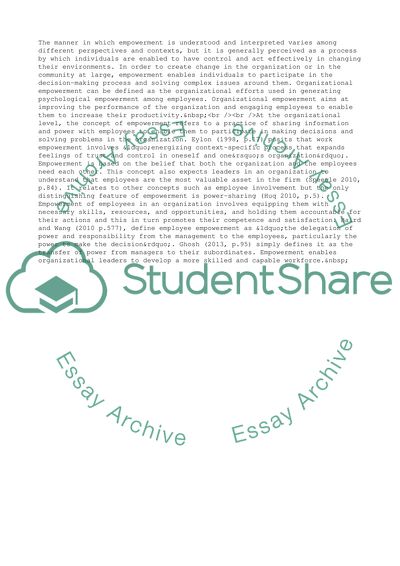Cite this document
(Empowerment Is an Unrealistic Concept Coursework Example | Topics and Well Written Essays - 1750 words, n.d.)
Empowerment Is an Unrealistic Concept Coursework Example | Topics and Well Written Essays - 1750 words. https://studentshare.org/management/1848840-empowerment-is-an-unrealistic-concept
Empowerment Is an Unrealistic Concept Coursework Example | Topics and Well Written Essays - 1750 words. https://studentshare.org/management/1848840-empowerment-is-an-unrealistic-concept
(Empowerment Is an Unrealistic Concept Coursework Example | Topics and Well Written Essays - 1750 Words)
Empowerment Is an Unrealistic Concept Coursework Example | Topics and Well Written Essays - 1750 Words. https://studentshare.org/management/1848840-empowerment-is-an-unrealistic-concept.
Empowerment Is an Unrealistic Concept Coursework Example | Topics and Well Written Essays - 1750 Words. https://studentshare.org/management/1848840-empowerment-is-an-unrealistic-concept.
“Empowerment Is an Unrealistic Concept Coursework Example | Topics and Well Written Essays - 1750 Words”. https://studentshare.org/management/1848840-empowerment-is-an-unrealistic-concept.


